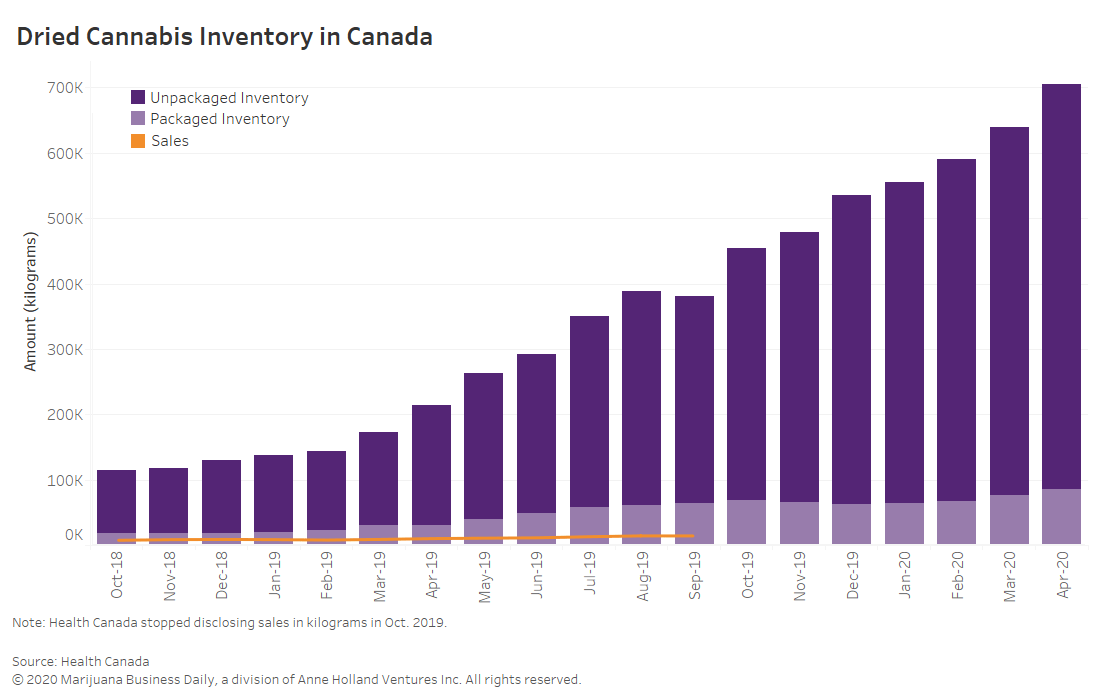Federally licensed producers in Canada are stockpiling more cannabis than ever, new figures from the Canadian government show, indicating that some producers are in store for more financial pain as the market looks for equilibrium.
Deeper industrywide cuts might still be needed for the large producers to shed excess production, even as the industry continues to see impressive month-on-month retail sales growth.
In addition, roughly 85,014 kilograms of packaged inventory was being held in April by federal license holders, retailers and wholesalers – defined as cannabis in inventory that is packaged for sale to consumers.
Craig Wiggins, managing director of market researcher TheCannalysts, said “It’s plain old supply and demand. If you cannot sell what you’re making, it starts backing up and you will eventually have to write it down or destroy it if it doesn’t sell.”
“The total addressable market is growing. There’s no question about it,” he said. “But it’s not growing to the extent that it can absorb the unsalable product, so adjustments are coming.”
It is a similar story for extracts, edibles and topicals, though Health Canada uses “packaged units” to measure those inventory levels.
For example, the Health Canada data shows more than 9 million packaged units of cannabis extracts in April versus sales of a little over 1 million packaged units.
In the lead-up to legalization in October 2018, the largest Canadian producers spent billions of dollars building up production capacity and on acquisitions – moves criticized as a nod to stock market investors rather than an attempt to address actual consumer demand.
Much of that capacity was shown to be misplaced, despite a short-lived scarcity in the months after legalization.
Since the shortage abated, producers such as Aurora Cannabis and Canopy Growth raced to slash costs and excess production, laid off thousands of workers and wrote down billions in inventory. Some are selling greenhouses for a fraction of their original cost.
“We’ve seen a cutting of capacity, but the capacity that they reduced to might still be optimistic,” Wiggins said.
Brock University business professor Michael Armstrong said looming outdoor harvests this fall could also factor into inventories.
The amount of space licensed to grow cannabis outdoors now exceeds indoor and greenhouse.
“The (production) bump next fall is probably going to be even larger (than 2019’s), so current indoor production plans should be taking into account that a surge is going to come from outdoor.”
Health Canada’s cannabis market data can be found here.
Matt Lamers is Marijuana Business Daily’s international editor, based near Toronto. He can be reached at mattl@mjbizdaily.com.





